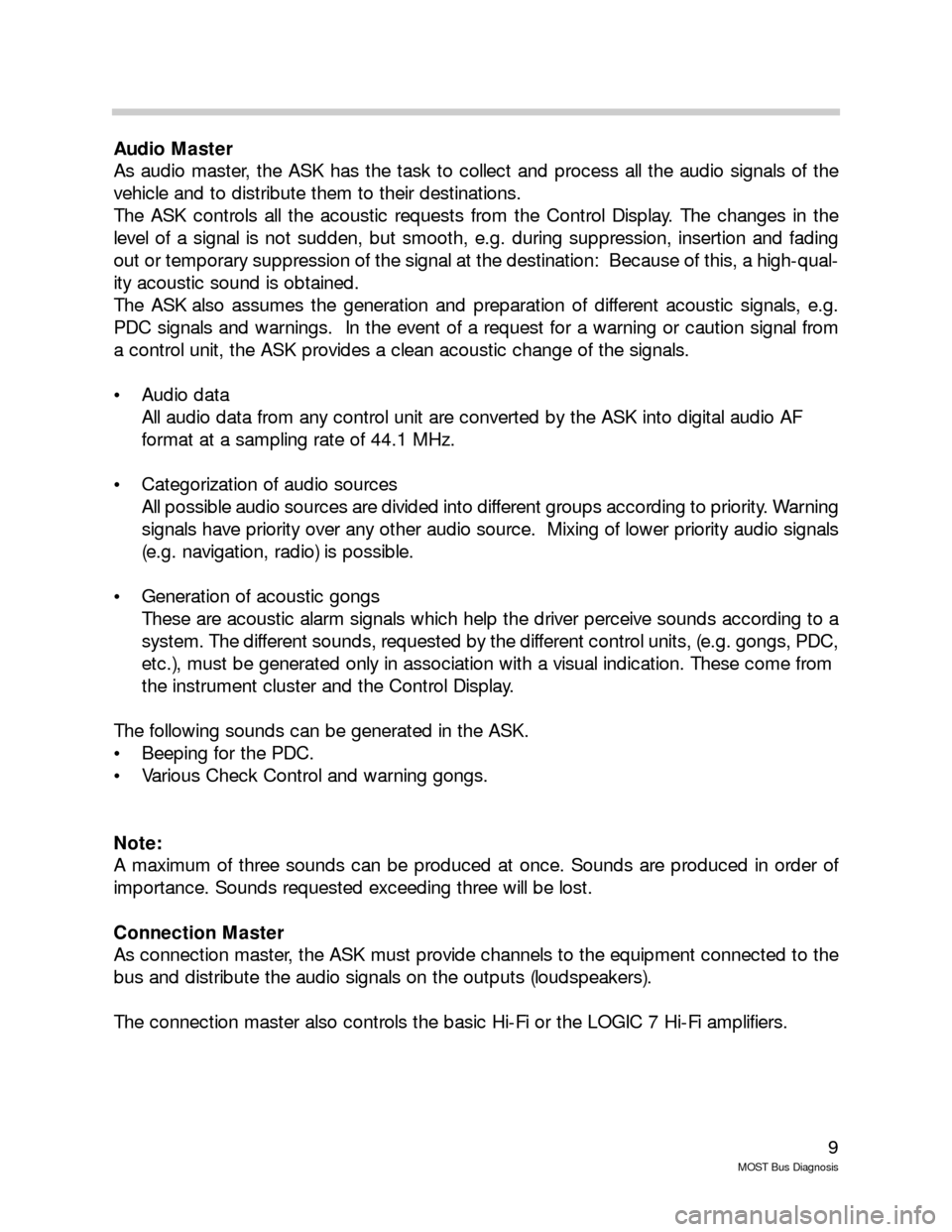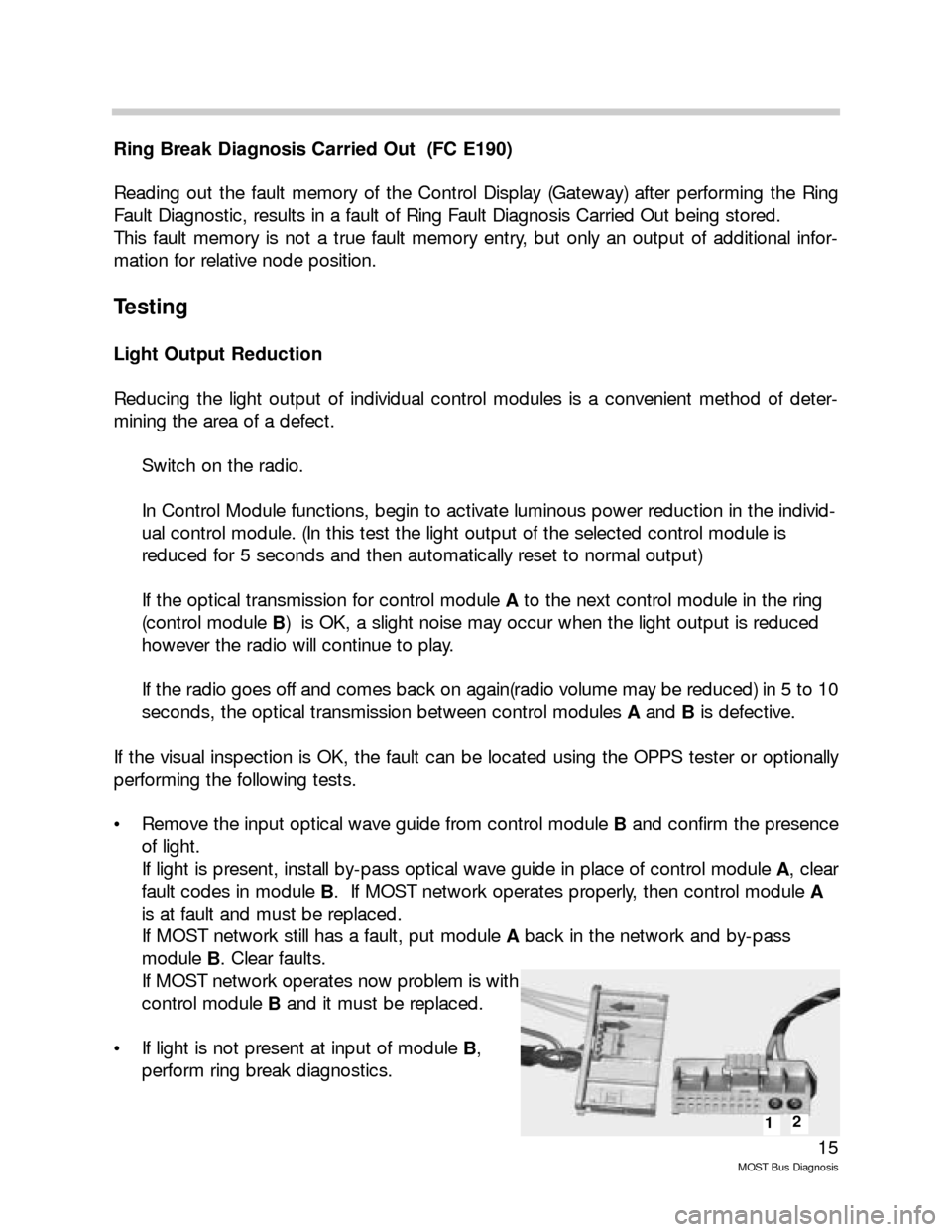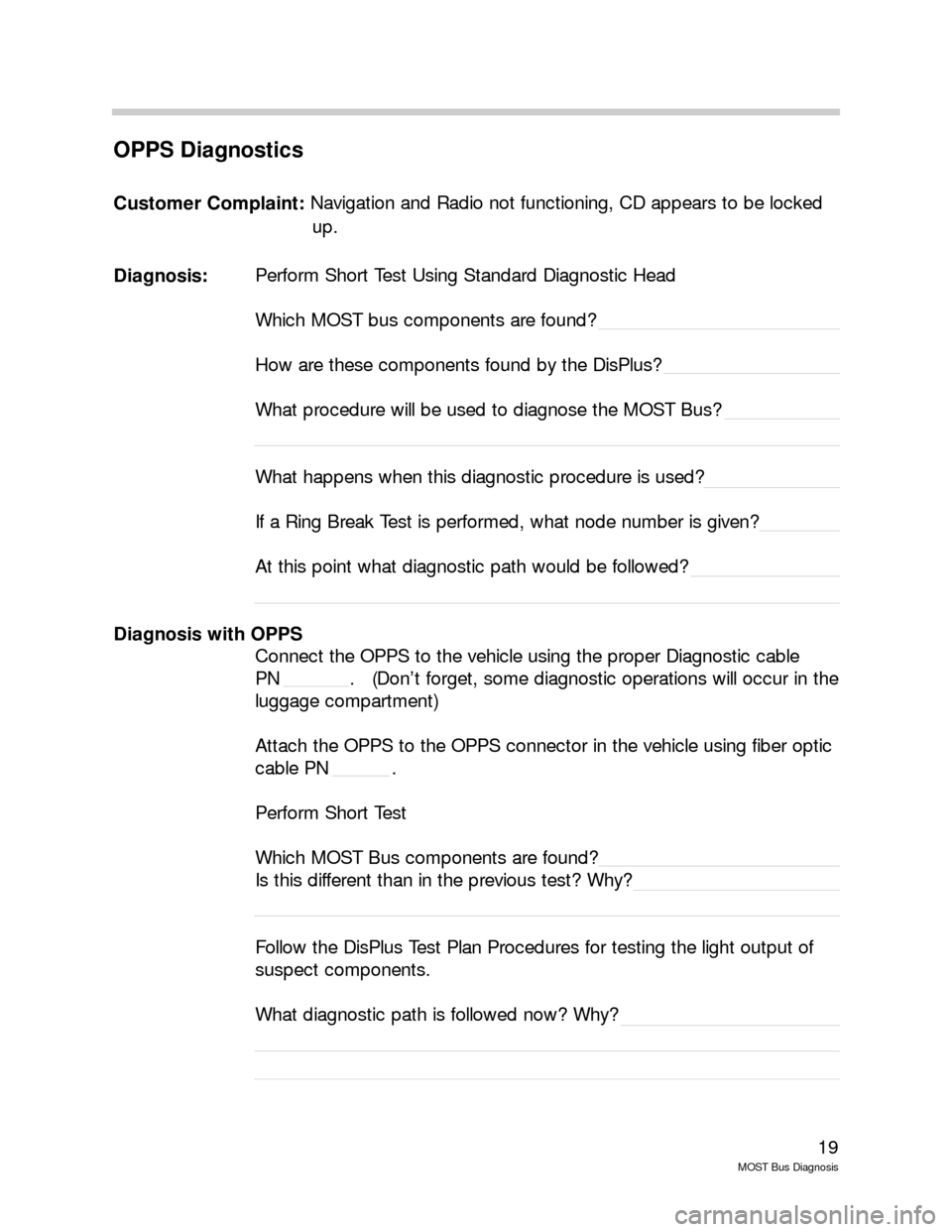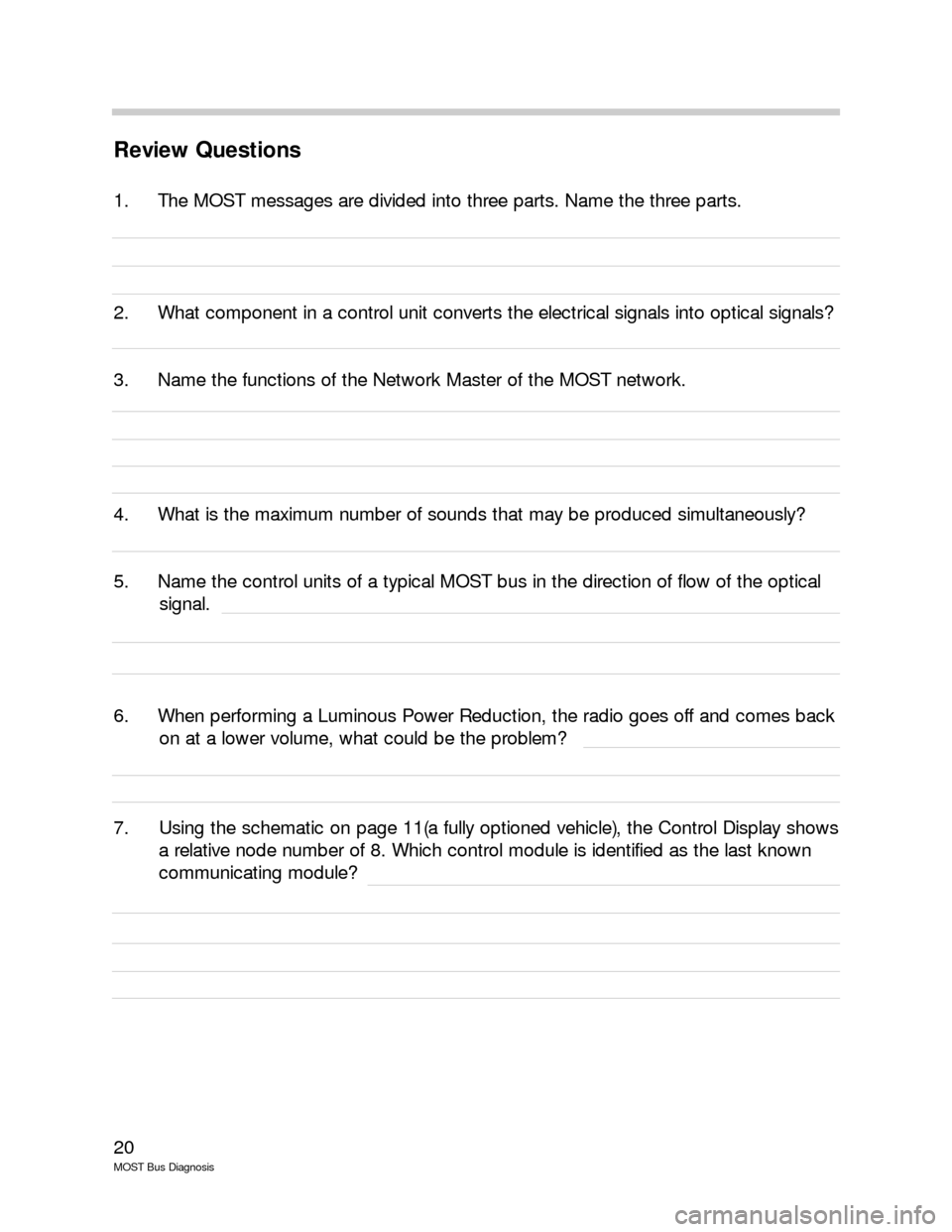radio BMW 7 SERIES LONG 2005 E66 MOST Bus Diagnosis Workshop Manual
[x] Cancel search | Manufacturer: BMW, Model Year: 2005, Model line: 7 SERIES LONG, Model: BMW 7 SERIES LONG 2005 E66Pages: 20, PDF Size: 0.13 MB
Page 9 of 20

9
MOST Bus Diagnosis
Audio Master
As audio master, the ASK has the task to collect and process all the audio signals of the
vehicle and to distribute them to their destinations.
The ASK controls all the acoustic requests from the Control Display. The changes in the
level of a signal is not sudden, but smooth, e.g. during suppression, insertion and fading
out or temporary suppression of the signal at the destination: Because of this, a high-qual-
ity acoustic sound is obtained.
The ASK also assumes the generation and preparation of different acoustic signals, e.g.
PDC signals and warnings. In the event of a request for a warning or caution signal from
a control unit, the ASK provides a clean acoustic change of the signals.
Audio data
All audio data from any control unit are converted by the ASK into digital audio AF
format at a sampling rate of 44.1 MHz.
Categorization of audio sources
All possible audio sources are divided into different groups according to priority. Warning
signals have priority over any other audio source. Mixing of lower priority audio signals
(e.g. navigation, radio) is possible.
Generation of acoustic gongs
These are acoustic alarm signals which help the driver perceive sounds according to a
system. The different sounds, requested by the different control units, (e.g. gongs, PDC,
etc.), must be generated only in association with a visual indication. These come from
the instrument cluster and the Control Display.
The following sounds can be generated in the ASK.
Beeping for the PDC.
Various Check Control and warning gongs.
Note:
A maximum of three sounds can be produced at once. Sounds are produced in order of
importance. Sounds requested exceeding three will be lost.
Connection Master
As connection master, the ASK must provide channels to the equipment connected to the
bus and distribute the audio signals on the outputs (loudspeakers).
The connection master also controls the basic Hi-Fi or the LOGIC 7 Hi-Fi amplifiers.
Page 15 of 20

15
MOST Bus Diagnosis
Ring Break Diagnosis Carried Out (FC E190)
Reading out the fault memory of the Control Display (Gateway) after performing the Ring
Fault Diagnostic, results in a fault of Ring Fault Diagnosis Carried Out being stored.
This fault memory is not a true fault memory entry, but only an output of additional infor-
mation for relative node position.
Testing
Light Output Reduction
Reducing the light output of individual control modules is a convenient method of deter-
mining the area of a defect.
Switch on the radio.
In Control Module functions, begin to activate luminous power reduction in the individ-
ual control module. (In this test the light output of the selected control module is
reduced for 5 seconds and then automatically reset to normal output)
If the optical transmission for control module Ato the next control module in the ring
(control module B) is OK, a slight noise may occur when the light output is reduced
however the radio will continue to play.
If the radio goes off and comes back on again(radio volume may be reduced) in 5 to 10
seconds, the optical transmission between control modules Aand Bis defective.
If the visual inspection is OK, the fault can be located using the OPPS tester or optionally
performing the following tests.
Remove the input optical wave guide from control module Band confirm the presence
of light.
If light is present, install by-pass optical wave guide in place of control module A, clear
fault codes in module B. If MOST network operates properly, then control module A
is at fault and must be replaced.
If MOST network still has a fault, put module Aback in the network and by-pass
module B. Clear faults.
If MOST network operates now problem is with
control module Band it must be replaced.
If light is not present at input of module B,
perform ring break diagnostics.
12
Page 19 of 20

19
MOST Bus Diagnosis
OPPS Diagnostics
Customer Complaint:Navigation and Radio not functioning, CD appears to be locked
up.
Diagnosis:Perform Short Test Using Standard Diagnostic Head
Which MOST bus components are found?
How are these components found by the DisPlus?
What procedure will be used to diagnose the MOST Bus?
What happens when this diagnostic procedure is used?
If a Ring Break Test is performed, what node number is given?
At this point what diagnostic path would be followed?
Diagnosis with OPPS
Connect the OPPS to the vehicle using the proper Diagnostic cable
PN . (Don’t forget, some diagnostic operations will occur in the
luggage compartment)
Attach the OPPS to the OPPS connector in the vehicle using fiber optic
cable PN .
Perform Short Test
Which MOST Bus components are found?
Is this different than in the previous test? Why?
Follow the DisPlus Test Plan Procedures for testing the light output of
suspect components.
What diagnostic path is followed now? Why?
Page 20 of 20

20
MOST Bus Diagnosis
Review Questions
1. The MOST messages are divided into three parts. Name the three parts.
2. What component in a control unit converts the electrical signals into optical signals?
3. Name the functions of the Network Master of the MOST network.
4. What is the maximum number of sounds that may be produced simultaneously?
5. Name the control units of a typical MOST bus in the direction of flow of the optical
signal.
6. When performing a Luminous Power Reduction, the radio goes off and comes back
on at a lower volume, what could be the problem?
7. Using the schematic on page 11(a fully optioned vehicle), the Control Display shows
a relative node number of 8. Which control module is identified as the last known
communicating module?